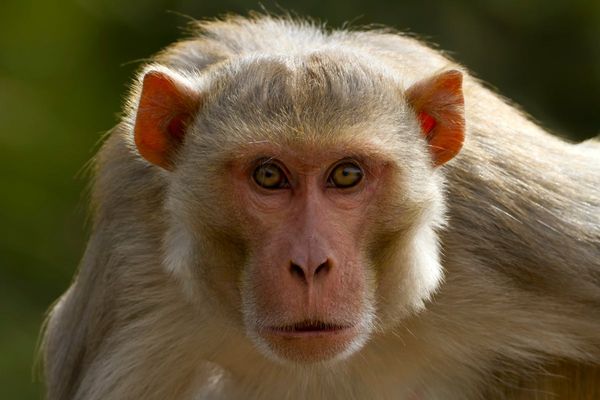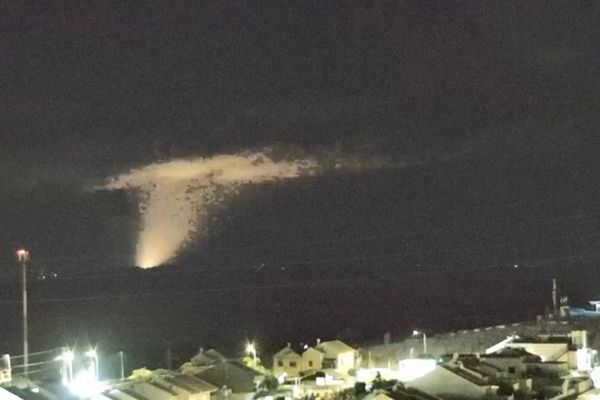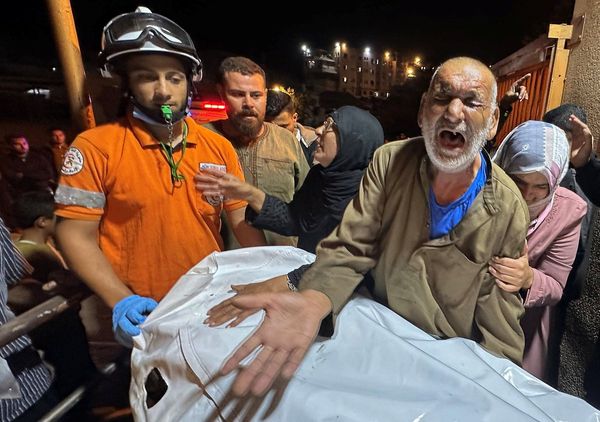
Hurricane Melissa has made landfall in Jamaica as a catastrophic category 5 storm, the strongest to lash the island since record-keeping began in 1851.
The slow-moving giant hit the island on Tuesday afternoon and is expected to linger, moving diagonally through it until heading on to slam into Cuba, with impacts also expected in Haiti and the Bahamas.
Satellite footage shows the moment the eyewall of the storm hits Jamaica.
How intense is the storm?
Melissa is particularly dangerous as it intensified extremely quickly and is moving at the sluggish speed of a person running, meaning it will hover over Jamaica for longer, compounding the damage.
The storm’s winds escalated from 70mph to 140mph (225km/h) in just a day, one of the fastest intensifications on record in the Atlantic Ocean.
Category 5 is the highest on the Saffir-Simpson scale, with sustained winds exceeding 157mph.
This system is worse still, with maximum sustained winds of 180mph (280km/h). It is moving north-northeast at 7mph, according to the US National Hurricane Center in Miami.
How prepared is Jamaica for a storm like this?
Forecasters warned that Jamaica faces catastrophic flash flooding and numerous landslides. Airports were shut down and highway toll barriers had been lifted to allow everyone who needs to evacuate to move as easily and as fast as possible.
The small country has limited resources and is still repairing damage caused by Hurricane Beryl, which brought historic levels of destruction last year.
“There is no infrastructure in the region that can withstand a category 5,” the prime minister, Andrew Holness, said. “The question now is the speed of recovery. That’s the challenge.”
A life-threatening storm surge of up to 4 metres (13ft) is expected across southern Jamaica, with officials concerned about damage to hospitals along the coastline.
The aftermath could have significant impact – Jamaica depends on tourism for about a third of its annual revenue.
How are people sheltering?
Tens of thousands of Jamaica’s 2.8 million population could be displaced. Holness has said there are 850 shelters across the island, enough for more than 20,000 people.
But Colin Bogle, a Mercy Corps adviser based near Kingston, said most families have decided to shelter in their homes, despite the government ordering evacuations in flood-prone communities.
“Many have never experienced anything like this before, and the uncertainty is frightening,” he said. “There is profound fear of losing homes and livelihoods, of injury and of displacement.”
What is the impact of the storm so far?
Heavy flooding was reported in south-west Jamaica and several buildings had suffered severe structural damage – with roofs torn off and roadways blocked by fallen trees and rocks, according to the Associated Press.
The Jamaica Gleaner newspaper shared footage of what it said was a roof torn from the Savanna La Mar hospital in Westmoreland parish, close to where Melissa’s eyewall made landfall.
What is the impact of the climate crisis?
The extraordinary intensification of Hurricane Melissa is likely to be a symptom of the rapid heating of the world’s oceans.
Melissa is the fourth storm in the Atlantic this year to undergo rapid intensification of its wind speed and power. This sort of intensification has been linked to the human-caused climate crisis, which is causing oceans to become hotter.
Researchers at Climate Central, a nonprofit organisation that analyses climate science, found that during Melissa’s rapid intensification the storm drifted over exceptionally warm ocean waters that were 1.4C hotter than average. These conditions were made up to 700 times more likely because of the climate crisis, the organisation said.
Last year, the world’s oceans were the warmest on record, continuing a recent trend of record-breaking marine heat.







